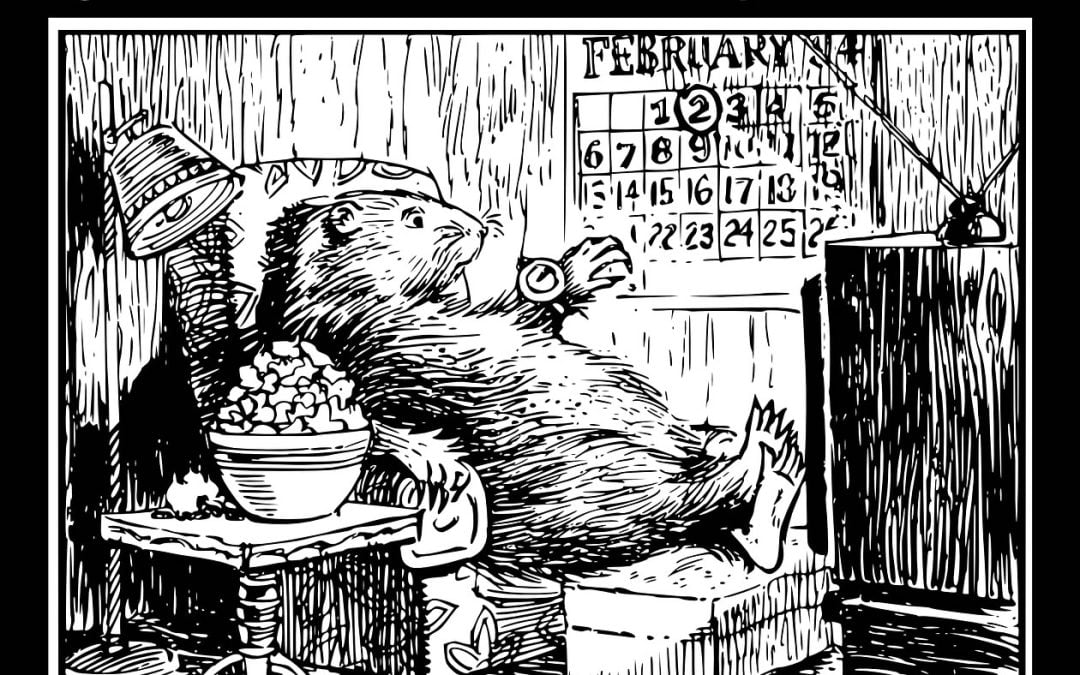
Groundhog Day
On February 4, 1977, the band Fleetwood Mac released their record-selling “Rumours” album. Lindsey Buckingham and Christine McVie sang one of its songs, “Don’t Stop.”
“If you wake up and don’t want to smile. If it takes just a little while. Open your eyes and look at the day. You’ll see things in a different way. Don’t stop thinking about tomorrow. Don’t stop. It’ll soon be here. It’ll be better than before. Yesterday’s gone. Yesterday’s gone.”
Last week, for the first time, I watched Bill Murray play the part of Phil Connors, in the movie “Groundhog Day.” For a romantic comedy, I would say that it was ok, even better than ok.
Phil Connors is an arrogant, obnoxious weather forecaster, who works at a Pittsburgh television station. His boss sends him to Punxsutawney, Pennsylvania, eighty miles away, to report on the town’s annual Groundhog Day celebration, set for February 2.
With his producer Rita and cameraman Larry, Connors drives to Punxsutawney on February 1. The next morning, February 2, an alarm clock awakens Connors at 6:00 a.m., in a bed inside the town’s bed and breakfast. The radio plays Sonny and Cher singing, “I’ve Got You Babe.”
A radio DJ then says, “OK, campers, rise and shine, and don’t forget your booties, because it’s cold out there! The National Weather Service is calling for a big blizzard thing today.”
Connors meets Rita and Larry at Gobler’s Knob in the town square to watch the groundhog come out of its box. Connors looks into Larry’s camera and speaks. Rita watches and approves, even though Connors acts and talks in a condescending way about the town’s citizens.
Once the groundhog sees its shadow, an official declares that winter will last six more weeks.
Connors, Rita, and Larry drive out of Punxsutawney, but a blizzard forces them back to the town. The next morning at 6:00 a.m., in his bed, Connors awakens to hear “I’ve Got You Babe,” and the DJ repeats word for word his call for a big blizzard. Connors thinks this odd.
Outside, he notices people walking to Gobler’s Knob. He asks someone what day it is and learns that it is February 2, Groundhog Day. He meets Rita and Larry, but they do not remember that they completed all this yesterday. Larry films Phil a second time.
No one else in Punxsutawney remembers, only Phil Connors.
The next morning at 6:00 a.m., he awakens to hear Sonny and Cher singing, “I’ve Got You Babe,” and to the DJ predicting a blizzard. It is again February 2, Groundhog Day. The same thing happens the next day, and the next day, dozens, perhaps hundreds of times.
He soon realizes that tomorrow never arrives. Every new morning is February 2. He is stuck in a time loop, a Twilight Zone, and Phil Connors never learns how or why this is happening.
He tries to explain his predicament to Rita, his lovely television associate, saying,
“Well, what if there is no tomorrow? There wasn’t one today.” “It’s like yesterday never happened.” “What would you do if you were stuck in one place, and every day was exactly the same, and nothing you did mattered?”
“Rita, if you only had one day to live, what would you do with it?” “I wake up every day right here in Punxsutawney, and it’s always February 2. And there’s nothing I can do about it.” “Now, tomorrow, you will have forgotten all about this. And you’ll treat me like a jerk.”
Phil kills himself again and again, but the next morning he awakens in his bed at 6:00 a.m.
He settles down and takes some baby steps to improve himself. He learns to play the piano. With a chainsaw, he makes an ice sculpture. He learns to speak French. He helps people in town, and they call him “Doctor.” He treats Rita better and falls in love with her.
One critic wrote, “Phil must figure out how to arrest the cycle. The secret, it transpires, lies within him.” Another wrote, “Change arises from repetition. The film follows that to the letter.”
“Groundhog Day,” was first released on February 4, 1993, thirty years ago this week, and to celebrate its anniversary, movie officials plan to release the film this month in select theaters.
“Don’t stop thinking about tomorrow.” Phil Connors never did.



